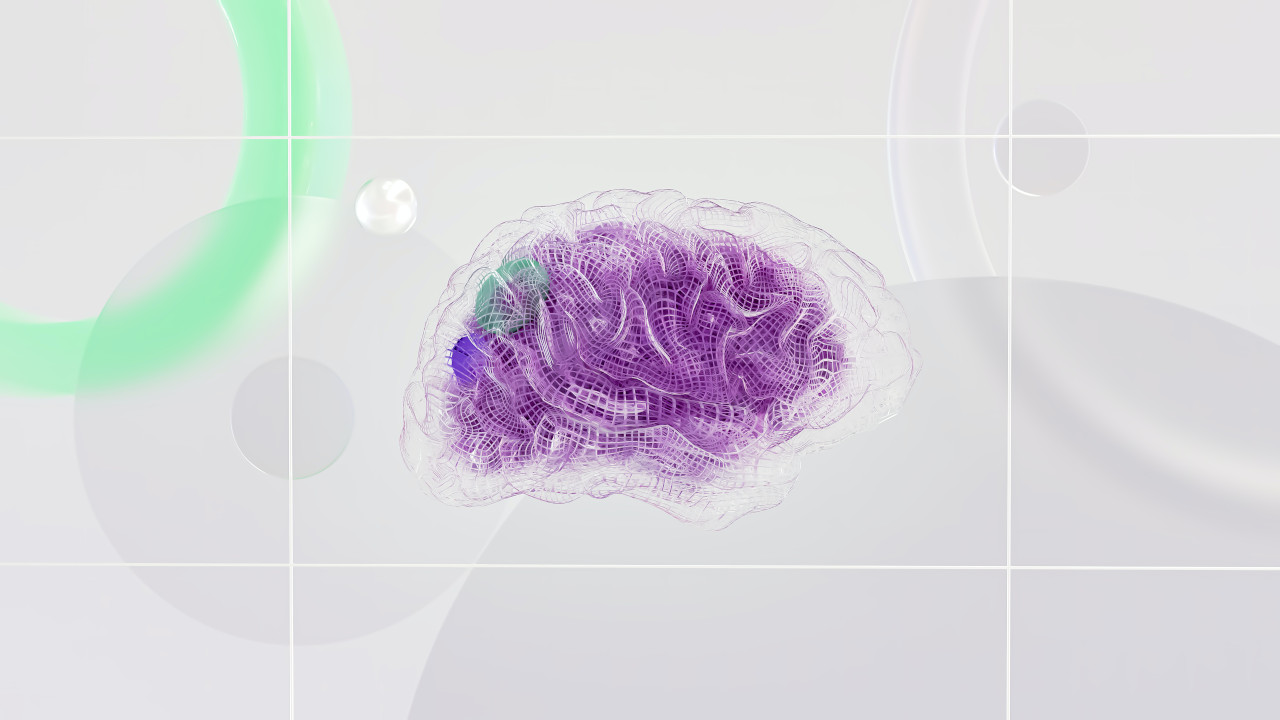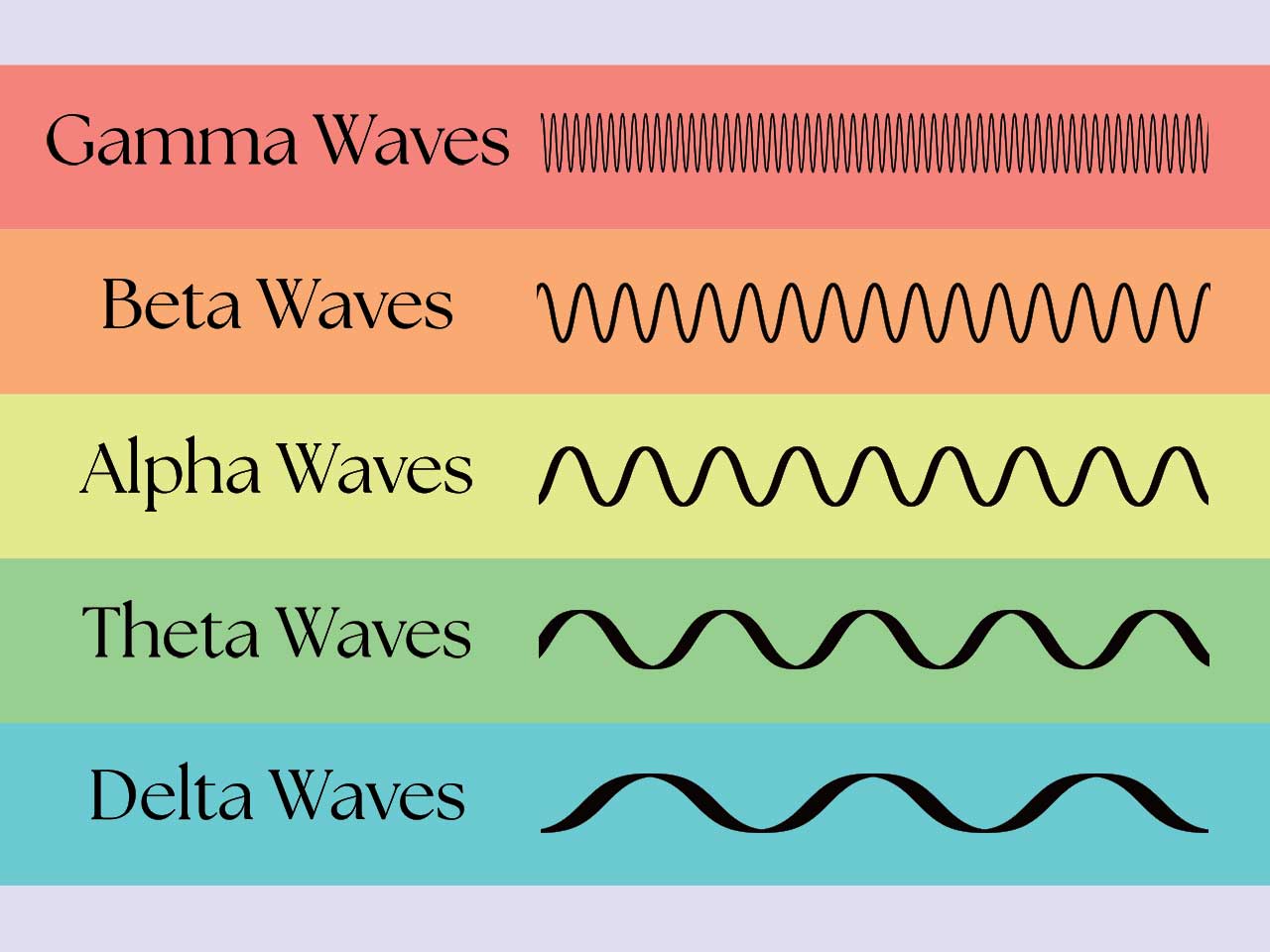It is possible to train your brain to access certain mental states when you need them, giving you greater self-control and improving your cognitive capacities. And no, we’re not talking about another unsubstantiated “brain game.”
There’s no shortage of attempts at brain-training methods designed to increase your memory or intelligence, and a quick glance through an app store will highlight how increasingly popular they are.
But not all of them are equal, and in many cases, the results are lackluster. Past research has seriously questioned the effectiveness of many brain games, and in many cases we’re only getting better at the very specific task we practice—there’s no general improvement in memory of intelligence.
While these apps might struggle to achieve what they claim, their popularity highlights how eager people are to strengthen their mental muscles. So what should we do?
Fortunately, there are options, and alpha-theta training is one. It’s a method that relies on neurofeedback—watching your brain activity as you perform different tasks. And there is plenty of research to back it up.
Biofeedback For Your Brain
Neurofeedback is itself a form of biofeedback—using technology to give people a better insight into their physiological functions. Everything from stethoscopes to wearable heart rate monitors offer biofeedback.
More recently, the growing accuracy and affordability of technologies capable of recording brain activity have made it possible to peer inside the skull. And there’s a lot to be found.
Your brain is a dense web of electrical activity that oscillates as a function of your mood and energy levels, and with a set of decent EEG electrodes nestled across your scalp, you can watch those levels rise and fall.
Compare how different your mind feels when it’s juggling complex tasks in a stressful environment, versus the calm you experience laying in on a Sunday morning—those differences can be seen on an EEG device.
This is the key behind neurofeedback training—if you can peer into what your brain is doing, you can see how new thoughts and behaviors alter those patterns, and practice those activities which get you where you want to be.
Neurofeedback can help you become more aware of your own brainwave patterns, and gives you the skills to self-regulate them. With practice, you can learn to shift your brainwave patterns on the fly, improve focus and attention, reduce stress and anxiety, and generate more creative ideas.
An Introduction To Alpha and Theta Waves

It wouldn’t be right to say there are bad brain waves, each serves a valuable purpose when they arise at the right time. However, it’s fair to say we have some trouble dropping our brain waves into the lower bands when it would be beneficial to do so.
For that reason, the goal of neurofeedback brainwave training is often achieving lower ranges of alpha or theta waves.
Alpha brain waves occupy the range of 8-12 Hz and are associated with wakeful relaxation, you’ll also find them when you daydream or meditate.
Theta brain waves are even lower, between 4-8 Hz, and are found in even deeper meditative states, as well as during some stages of sleep.
Much of our day is spent in higher beta and gamma bands ranging from 12 Hz all the way up to 100 Hz or more, this is where our minds are fully engaged in demanding tasks, managing information, and intently focused on goals.
There’s a substantial difference between those frequency ranges, and it’s no small task to drop your brain waves from the peaks to the valleys, which is why alpha-theta brainwave training can be so helpful.
The Benefits of Alpha-Theta Training

Both alpha and theta brain waves have a wealth of research behind them, as does neurofeedback more generally, and as you’ll see in the following list, the benefits go well beyond relaxation.
1. Improved Attention and Self-Regulation
The goal of neurofeedback is usually better self-regulation so we should start there, and it shouldn’t come as a surprise that alpha-theta training succeeds in this respect.
Studies find neurofeedback capable of improving attention and working memory as well as a host of other cognitive benefits. Even a single session of alpha-theta neurofeedback training was found to boost vigilance and concentration.
Other studies have highlighted the potential for neurofeedback to help children develop their attention, and to help both children and adults with ADHD better manage and self-regulate their attention.
Like meditation, neurofeedback teaches us how to direct the mind more effectively, so a better ability to attend to what we want when we need, should be expected. But there are plenty of other benefits that might not be so obvious.
2. A Creativity Boost
One less obvious advantage of neurofeedback is a boost in creativity. While the training itself asks us to focus on our brain waves, the benefit of being able to adjust those brain waves outside the training phase can optimize performance in creative pursuits.
Alpha waves have been strongly associated with creativity. Alpha waves in the frontal regions of the brain have been linked to idea generation, while alpha activity in the right parietal area was linked to more creative ideas.
With alpha-theta neurofeedback training you will be able to access these creative states more efficiently. When researchers studied musicians who practiced neurofeedback, they had this to say:
“[C]reativity, hypnagogia and music improvisation share a common neurophyisology, and that this may be open to regulation by the application of neurofeedback training that regulates alpha and theta EEG.”
Creativity, particularly the type of improvisation characteristic of musical performance, requires a mind at ease, open to ideas, and skillful enough to explore them. Neurofeedback certainly helps in this regard, and also nicely leads into the next point.
3. Entry into a Flow State
Flow is a mind-consuming experience where actions happen with near automaticity and our attention is guided with ease. If your mind is too busy or too bored, flow won’t happen. You need to be relaxed but focused.
When you experience a flow state you’ll find your brain oscillating in the theta and alpha ranges. A 2021 study found optimal performance was characterized by these frequencies, and the frontal lobes were more relaxed.
With practice, neurofeedback training can make it easier to enter a flow state even when the situation or circumstances wouldn’t normally elicit one, by calming the mind to the right degree yet staying engaged in the task.
A 2021 study from the Journal of Cognitive Enhancement found that even a single session of neurofeedback training can enhance motor performance and increase flow experiences through better regulation of theta waves.
4. Deeper Meditative States
Theta brain waves are found at the edges of sleep, as you’re slowly drifting off or as you’re awakening, an experience people often describe as blissful.
Neurofeedback, much like many forms of meditation, can help us sink down into this blissful state. In fact, for novice meditators that might initially struggle with directing their attention during meditation, neurofeedback training can provide a helping hand.
Because there are brain waves for you to attend to, and the task of manipulating them, neurofeedback is a more active process than meditation. And as you get better at altering your brain waves, when you do simply meditate you’ll find it much easier.
Another study found that neurofeedback combined with mindful meditation increased state mindfulness, there is also some evidence that certain types of neurofeedback can improve meta-awareness and reduce problematic mind wandering.
5. Reprogram Mental Habits
So much of our behavior happens automatically. This is a good thing, if we had to constantly think through every action or decision we would take an age to get anywhere.
But sometimes we get stuck in negative loops, sometimes our inner critic keeps putting us down, and changing these bad habits can be very difficult. But it appears that neurofeedback training can help.
When you practice alpha-theta neurofeedback, you’re often advised to close your eyes as you sink into theta waves and repeat a mantra or visualization so as to change the narratives that usually emerge from your subconscious mind during regular hours.
Several studies have found neurofeedback helps athletes adjust the way they talk to themselves, which in turn improves their performance.
According to Nancy White, in a section of the book ‘Introduction to Quantitative EEG and Neurofeedback’ from 1999:
“[Alpha-theta neurotherapy] appears to evoke in the patient more general, adaptive shifts in behaviors, attitudes, relationships, health, mental processing, job performance, and creativity.”
6. Reduce Stress and Anxiety
There are many reasons we might struggle to relax when we need to—juggling too many tasks, a looming problem with no obvious solution, or a health or personal crisis we didn’t see coming.
If we don’t get adequate rest and relaxation our health and well-being will suffer, and things don’t get any better when people under high levels of stress turn to unhelpful solutions like drugs and alcohol.
Thankfully neurofeedback and meditation can provide beneficial alternatives. As alpha and theta waves reflect a calm and creative state of mind, neurofeedback can provide an effective antidote to stress and anxiety, which are characterized by much higher levels of cerebral activity.
One study found that alpha-theta neurofeedback training led to significant improvements in energy, mindfulness, and spirituality. Another study found neurofeedback represented an effective alternative to invasive or pharmacological treatments for depression and anxiety.
7. Relieve Trauma and Addictions
We’ve just mentioned that people often turn to alcohol and other drugs when they’re stressed or anxious, this has led some researchers to speculate that healthier relaxation techniques might be effective at managing not just the stress but the addictions.
Subsequent research supports the notion—neurofeedback has been shown in numerous studies to reduce drug cravings, reduce unhealthy food cravings, and help alleviate alcoholism and other substance abuse problems.
Neurofeedback also shows promise in the treatment of post-traumatic stress disorder. It provides a more pleasant alternative to other treatments that often rely on exposure to stressful stimuli.
Going even further, it seems neurofeedback can help with recovery from different brain injuries and trauma such as concussions, highlighting how greater control over our brain waves can support recovery from physical brain injuries.
Taken together, neurofeedback is a valuable tool to help individuals repair and recover from many different neurological problems and injuries.
How To Start Alpha-Theta Brainwave Training
Alpha-theta neurofeedback can give you greater control over your mind, allowing you to enter preferred states with more ease and efficiency. But how exactly should you go about doing it?
Many commercial EEG devices these days come with a selection of games and other interactive activities that you play with your thoughts and brain waves, and this is probably a good place to start if you have the chance.
But if your neurotech headset didn’t come with activities or if you simply want to give it a go without them, all you really need is a readout of your brain activity, and the patience to work with it.
As you watch the frequency on the screen change over time, try to pay attention to how you feel and what you’re thinking, ask yourself what changes are happening internally that you’re now seeing on a screen.
You can also couple neurofeedback with activities like meditation, yoga or exercise, music listening, and different breathing exercises. You might find some are particularly powerful in helping you into the right state of mind.
As a final point, it’s worth treating neurofeedback brainwave training not only as a training tool but as an educational one, something that offers a unique window into the inner workings of your mind.
Usually, we’re reliant on the thoughts and emotions circling our heads, but this is something different, it gives us an objective measurement of something that had always been so subjective.
Want to learn more about neurofeedback brainwave training for peak cognitive performance? Download our Flow Meditation Guide.
- How The Muse S Athena Works For EEG And fNIRS Neurofeedback - April 24, 2025
- The 10 Best Pomodoro Timer Apps For Remote Workers - April 11, 2025
- Hacking The Flow Cycle: Brainwaves, Creativity and Flow States - April 11, 2025





 This website uses cookies to improve your web experience.
This website uses cookies to improve your web experience.